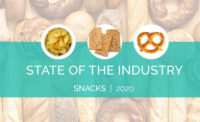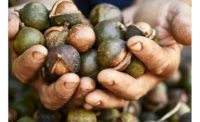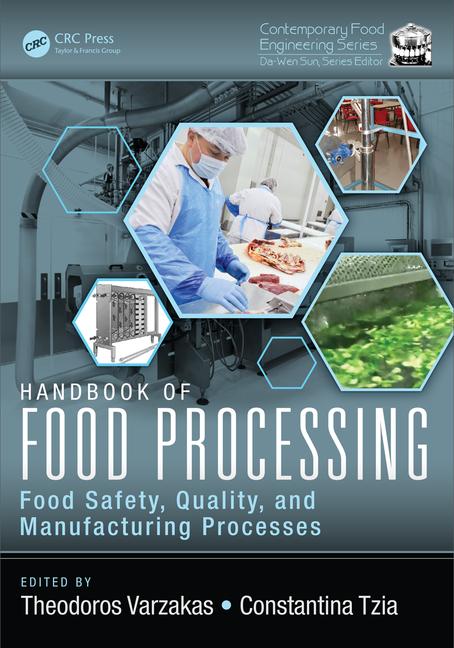By: Sean Riley, senior director, media and industry communications, PMMI
Underscoring a growing trend toward health and wellness brands, an October Wall Street Journal article reported that just one in five millennials had ever tried a Big Mac. Part of the reason for this surprising observation is the ever-growing number of choices consumers have to get their fast burger fix. However, the seismic shift taking place in today’s food markets is also driven by the tendency of the United States’ largest generation to spend with businesses and brands that reflect their values.
It is almost impossible to discuss the trend toward healthful foods and beverages without addressing the impact of millennials. This generation—defined by Pew Research as men and women aged 18-34 in 2015—now numbers 75 million. Food and beverage brands that are unable to gain their trust are likely to struggle, and a big part of that trust comes with clean labels and all-natural ingredients.
The Growth of the Organic Market
The Organic Trade Association reported that, of the $43.3 billion in total organic sales last year, $39.7 billion were food sales. This total was up 11 percent from 2014, far surpassing the overall food market’s growth rate of 3 percent.
For food and beverage manufacturers looking to attract millennial consumers, the solution to simply offer more organic options isn’t quite so simple. As in the case of McDonald’s with its Big Macs, the food industry has done business a certain way for decades. Adjusting to this new organic world is a massive undertaking that requires the adoption of entirely new processes that take time and money.
Processing for Preservation
Artificial ingredients and preservatives have been in use for decades for a reason: they work well, are safe to use and they are economical. To suddenly stop using them presents many challenges for a food manufacturer. This means delivering products with simple, clean formulations that do not contain preservatives,” explains Jean-Pierre Berlan, director of processing for Tetra Pak U.S. and Canada. “In other words, these savvy consumers are looking for the next best thing to fresh.”
There are solutions rising to the occasion that maintain the integrity and flavor of food for at least six months without refrigeration or preservatives. These also allow food to retain more color, texture, taste and nutrition.
“There are a few specific technologies that address the challenge of natural and organic products particularly well,” says Berlan. For foods with delicate flavors, for example, a brief direct steam injection method, rapidly followed by flash cooling can maximize the destruction of microorganisms while minimizing the chemical changes in the product. The brevity of the treatment makes it possible to achieve high quality and protect the full flavor of the product.
These types of filtration technologies reduce thermal impact, for example with pasteurized milk. The milk is passed through a membrane or thin layer of semi-permeable material, removing bacteria and microorganisms. These technologies are a way to remove oxygen from the product, for example from juices, thereby preventing reactions from dissolved oxygen in the beverage and preserving important nutritional ingredients, like vitamin C.
Changing the Ingredient Culture
Chipotle was building a successful fast-food business stressing fresh, all-natural ingredients—that is, until the E. Coli outbreak that the chain is still recovering from. The event served as a reminder of the risks associated with any food operation—even a modern, forward-thinking one.
Now take away the artificial preservatives that can help to ensure a safe, extended supply chain, and those risks multiply even further. Yet, today’s millennials are expecting their food to be fresh, natural, and organic, which means food companies can no longer fall back on traditional practices such as artificial preservatives that would otherwise minimize food safety risks. Alternatives to artificial preservatives are necessary to achieve the organic distinction. For companies seeking natural alternatives, bacteria cultures may be the solution.
“There are risks to moving to a clean label. Preservatives are in the food initially to bring a level of safety to the consumer,” says Besnik Hidri business development manager for bioprotective cultures, Chr. Hansen. Chr. Hansen is a global bioscience company that develops natural solutions for the food, nutritional, pharmaceutical and agricultural industries. “To remove preservatives, the manufacturer must decide whether to invest in new processes or alternative ingredients to achieve the same level of safety expected by consumers. Anything less could result in a negative consumer experience.”
Cleaning within organic requirements
While demand for organic food takes off, many food manufacturers continue to produce non-organic products in the same plants. This creates a unique challenge: how to keep your production lines from becoming cross-contaminated since there are very strict government regulations for organic food production.
There are organically certified cleaning solutions and sanitizers to enable companies to produce organics and non-organics on the same manufacturing lines. “If a plant is producing organic products, then the cleaning program we provide must also be organically-certified,” explains Nick Alfano, executive vice president, global food and beverage, Ecolab, Inc.
These cleaners are used to remove the residue from equipment, and the organic sanitizers then kill any remaining bacteria. Additionally, processing wash and treat solutions, such as wash water antimicrobials, help promote food quality and pathogen reduction.
Finding the right solutions
With all the attention being paid to organics these days, it may be hard to believe that still only five percent of all the food sold in the U.S. in 2015 was organic. But at double-digit growth, it’s obvious where the trends are heading. And, as these examples prove, the industry is rising to the challenge. Those looking to delve deeper into organic solutions from across the food and beverage industry can find innovations at ProFood Tech. Powered by tradeshow leaders PACK EXPO, Anuga and the International Dairy Foods Association (IDFA), the event will showcase advances in food and beverage processing that are revolutionizing the food industry. ProFood Tech is the only event in North America focused exclusively on all food and beverage sectors, including baking and snack. Beverage, Frozen/Prepared Foods, Dairy and Meat/Poultry/Seafood. The show will bring together 6,000 processors to see the latest technologies from 400+ of the world’s top suppliers.
Visit www.profoodtech.com to learn more.





